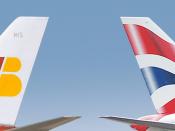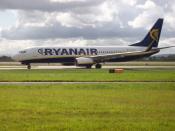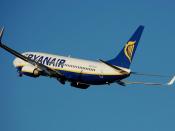IntroductionThis report discusses the business model adopted by Ryanair, why the model has enjoyed sustained success over longer established rivals such as British Airways, and also the risks that the model entails. Ryanair launched in 1985 as an airline with only a single aircraft flying short hops from Waterford to London, but now 14 years on is one of the largest low-cost airlines in Europe. Ryanair operates 181 aircraft on 730 routes across Europe and North Africa.[1]Ryanair's Business ModelThe business model adopted by Ryanair and other low-cost airlines is known in marketing terms as a cost-leadership strategy, or in the airline industry as a low-cost airliner. The low-cost airliner was first pioneered by US based Southwest airlines and was adopted by Ryanairs CEO Michael Oleary in 1991.[4] The basic principle of the low-cost airlines business model is to focus on large cost cutting whilst still maintaining a high profit margin.
In a matter of speaking, they aim to be the cheapeast airline out there and put as many bums on seats as humanly possible. In 1992 the European air industry was deregulated, this aided Ryanair and other low cost airlines because it gave carriers from one EU country the right to operate scheduled services between other EU states.[3]This cost-leadership strategy results in a number of practices that distinguish it from more traditional airlines business strategies. These are as follows;â¢A single passenger class called economy plus, no business or first classâ¢A single type of aircraft with minimalist interior equipment such as seats that don't recline, this helps to reduce both capital and maintenance costs.
â¢Unreserved seating, which helps to increase the speed at which passengers board the plane, thus reducing turnaround times at airports.
â¢Targeting flights to secondary airports that are less congested and have lower...



Aina
a good comparative essay
0 out of 1 people found this comment useful.